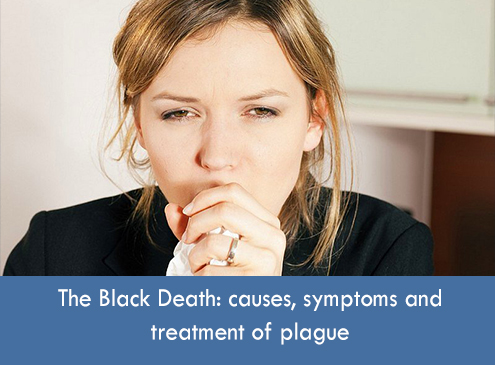
Infectious disease caused by the Yersinia pestis bacteria, plague – or the “Black Death”, as this illness has been called throughout the history” – is one of the merciless conditions from ancient times, destroying entire civilizations.
The bacteria responsible for this condition are found mainly in rats and fleas, but many other animals, including ground squirrels, prairie dogs, mice, rabbits, chipmunks and voles can be affected by the disease. Today plague occurs in fewer than 5,000 people a year, worldwide, but it is a deadly condition, and humans can contract it by coming in contact with contaminated fluids, tissues or droplets.
Hunters who come in contact with animals like rabbits for example, but also people who go camping and are bitten by fleas, or who camp in areas where rodents have recently died of plague, are at higher risk of getting infected. The bacteria can also be transmitted to humans if infectious droplets are breath in; such droplets can come from infected cats, who can transmit the plague to veterinarians or owners.
Although not a modern-day disease, plague is again in the spotlight after the death of two persons this summer in Colorado, USA.
The Black Death was one of the most threatening conditions hundreds of years ago, killing approximately 20 to 30 million of Europe’s population (one-third) in the 1300s. In the mid-1800s, the disease killed approximately 12 million people in China, and Australia suffered the effects of this condition as well, the latest epidemic being the one between 1900 and 1925. Nowadays the most numerous cases are in Asia, Africa and South America.
The condition manifests in three different ways, being classified as bubonic, septicemic or pneumonic plague.
Bubonic plague is the most common form, in this case bacteria infecting the lymph system and causing the inflammation of lymph nodules and vessels. Within 3 to 7 days of exposure, the lymph glands become swollen and tender (“buboes”, hence the name bubonic), and you start experiencing flu-like symptoms, such as headaches, fever, chills and general weakness.
Buboes are usually situated in the groin, neck and armpit areas, and are about the size of a chicken egg. This form of plague is rarely spread from one person to another, but you can contract it through flea bites or in rare cases from a piece of clothing that has been contaminated.
Septicemic plague occurs when bacteria get into the blood and start multiplying. The condition is transmitted in the same ways as bubonic plague, and symptoms include chills and fever, weakness, abdominal pain, bleeding underneath the skin and shock, but without the development of buboes.
Other symptoms may include diarrhea and vomiting, bleeding from your nose, mouth or rectum, and the blackening and gangrene (death) of tissue in your limbs or nose. Septicemic plague is rarely transmitted from one individual to another.
Pneumonic plague, the third and most serious form of the condition, appears when the bacteria infect the lungs, leading to pneumonia. As previous said, this form is contracted by inhaling contaminated droplets, and the symptoms usually start developing within 1-3 days after exposure. Shortness of breath, cough with bloody sputum, nausea and vomiting, weakness, high fever and chest pain are the common symptoms of this form of plague.
This form of the condition progresses rapidly and may lead to shock and respiratory failure within two days of contamination, so antibiotic treatment must be initiated when the first symptoms occur. Pneumonic plague is contagious and life-threatening, the lack of antibiotic treatment being in most cases fatal.
Except for antibiotics, there are no other treatments for plague at the moment. There’s no vaccine against this disease, so the best you can do is take preventive measures and ask for medical help if you experience the symptoms described above.
Have something to add to this article? Comment below or join our Facebook community and share your thoughts with us!

Updated on: 08.09.2021 The lymphatic system is involved not only...

Stress can make you gain weight – we’ve heard this...

Various theories exist to answer this question. As you will...

Both rebounding and jumping on a trampoline are excellent ways...

Our series of whole body vibration machine exercise articles continues...